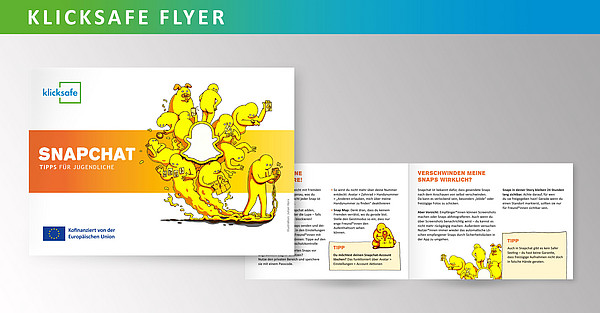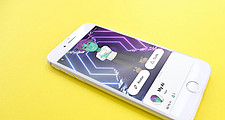What is Snapchat?
With the free app Snapchat you can send pictures, videos and texts. All recordings can be provided with filters, effects, emojis and texts. You can determine how long the sent file is visible for recipients.
Similar to other apps, teens can add a Snapchat story. These stories are visible for 24 hours and can only be viewed by friends or the entire Snapchat community, depending on the setting.
According to the terms of use , the age rating on Snapchat is a minimum age of 13 years (as of July 2023). All persons under the age of 18 require the consent of a parent or guardian to create an account. However, a reliable age verification does not take place.
In addition to creative editing options for images and videos, young people also prefer to use Messenger to send revealing and erotic photos of themselves. Sending erotic pictures and videos is known as sexting. Sexting is called sexting. This can be dangerous. Because pictures and videos can be taken and saved as simple screenshots, despite the limited time. In addition, it is often criticized that with some technical knowledge it is easy to restore and save the deleted images.
According to JIM Study2022 , 45% of young people use Snapchat regularly. 13% use the app to find out about current events.
Use Snapchat safely
Communication via Snapchat is designed to spontaneously share moments with other users. However, despite all the spontaneity, you should pause for a moment before sending and ask yourself whether you really want to make these photos available to others.
Snapchat should especially not be used to send candid pictures or videos. The possibilities that the app offers can also be used negatively. There is a great risk that files may be forwarded or posted on the Internet in order to blackmail or bully the sender.
To use Snapchat safely, you should also make sure that strangers cannot send you pictures or videos. In the settings, you can define who can send you messages and who can view your story. Both settings should be set to "Friends". Friends are the people in the contact list. Therefore, only people you actually know and trust should be added to the contact list.
However, if you are still being harassed by someone, Snapchat offers the option of blocking users. How exactly to do this is explained step by step on the Snapchat support page.
Snapchat Family Center
With the Family Center, people over the age of 25 can accompany young people between the ages of 13 and 18 in their Snapchat use. To send an invitation, the adult person also needs a Snapchat account. The new function then provides an overview of the list of friends and recent conversations. Exact contents of the messages are not shown. Parents can also report suspicious accounts directly. Teenagers as well as adults can leave the Family Center at any time.
Location sharing via "Snap Map" feature
The "Snap Map" feature can be used to track the current whereabouts of friends and to share one's own location with them. This can be done for all friends or for a selected group of people. If you want to use the Snap Map to find others, but do not want to be found yourself, you should activate the "ghost mode". Since permanently sharing your location can also be associated with risks, it is generally recommended to deactivate the location sharing of this function.
Delete Snapchat account
To delete your Snapchat account, it is not enough to remove the app from your smartphone. You have to log in to Snapchat's account portal with your app credentials. There you can select the option "Delete my account". The account will then be deactivated for 30 days before it is permanently deleted. Snapchat wants to offer the possibility to restore the account.
AI Chatbot My AI
Did you know, that there is also an Artificial Intelligence in your child's friends list with My AI? My AI, which means "My Artificial Intelligence", is the generative AI chatbot on Snapchat. The chatbot is based on ChatGPT and is used for chatting and simple research. It is a stripped-down version of ChatGPT that writes shorter texts and pretends to be a friend* on Snapchat. Without a paid Snapchat+ subscription, it is currently (August 2023) not possible to ban the chatbot from the top of the friends list or delete it completely.
Make it clear to your child that My AI is a machine and that it is not communicating with a real human. As Snapchat itself writes, My AI is prone to errors. Information can be made up or facts can be mixed up to make answers seem plausible.
Tips for parents
Often, disputes among friends or a problematic class situation are behind bullying attacks. Talk to your child and inform the teacher if necessary in order to find a solution together.
- In general, children and young people should break off contact immediately if the chat partners' questions become unpleasant or they feel pressured.
- Your child should only add people to their contact list who they actually know and trust.
- Advise your child at an early stage never to meet an online acquaintance alone.
- Everyone has the "right to their own image". Pictures that are posted or sent in the story without the consent of those pictured can be reported and deleted.
- Inform your child about copyrights. Videos with songs in the background cannot always be posted without hesitation.
- In the worst case, criminal action can also be taken against them.


